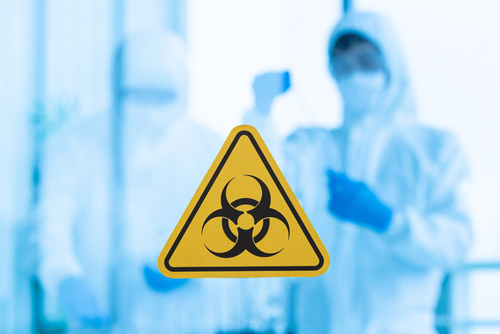
The U.S. Department of Homeland Security (DHS) finished building and commissioning a first of its kind National Bio and Agro-Defense Facility (NBAF) in Kansas last month, opening the doors of the only U.S. lab with biosafety level-4 containment capable of housing large livestock.
Supported by the Federal Law Enforcement Training Centers, the Science and Technology Directorate (S&T) finished the project under a $1.25 billion budget that spanned 17 years from concept to completion. It’s also a highly sustainable facility, being the only U.S. large-scale federal biocontainment lab to achieve LEED Gold certification or better. With its completion, DHS will formally transfer ownership of the site to the U.S. Department of Agriculture (USDA) over the next few weeks.
“The mission of the new facility is to protect the U.S. against transboundary, emerging, and zoonotic animal diseases that threaten the food supply, agricultural economy, and public health,” Dr. Dimitri Kusnezov, DHS Under Secretary for Science and Technology, said. “Since 2005, S&T and the United States Department of Agriculture (USDA) have collaborated on the requirements for this next-generation science facility that will replace DHS’s Plum Island Animal Disease Center (PIADC), a biosafety level-3 facility in New York that is more than 65 years old.”
The road to the NBAF began in 2009, following a three-year selection process that included 29 applications. In 2019, legislation directed the pending facility to ownership and operation by the USDA, meaning that once transfer is completed, DHS’s responsibility for NBAF will be concluded. However, DHS noted that it will maintain a strategic partnership with USDA through the new facility, and that both will make use of it to protect the nation’s food supply, agriculture economy and public health. Full mission transfer from the PIADC to the NBAF will likely take several years.
“DHS intends to leverage the broad network of homeland security-focused R&D infrastructure through collaborative partnerships with research facilities across the federal and state governments, academia, and private sector, including NBAF,” Dr. Herb Wolfe, acting chief medical officer and director for the Office of Health Security (OHS), said. “DHS has a responsibility to defend the food, agriculture, and veterinary systems of the United States against intentional, accidental, and naturally occurring high-consequence events, and will take a whole-of-government approach to accelerate and expand R&D of current and new capabilities to enhance the security and resilience of the food and agriculture sector.”
The facility includes systems and components critical to science operations and the safety of its staff and the public, as well as design features that exceed general sustainable development standards.




